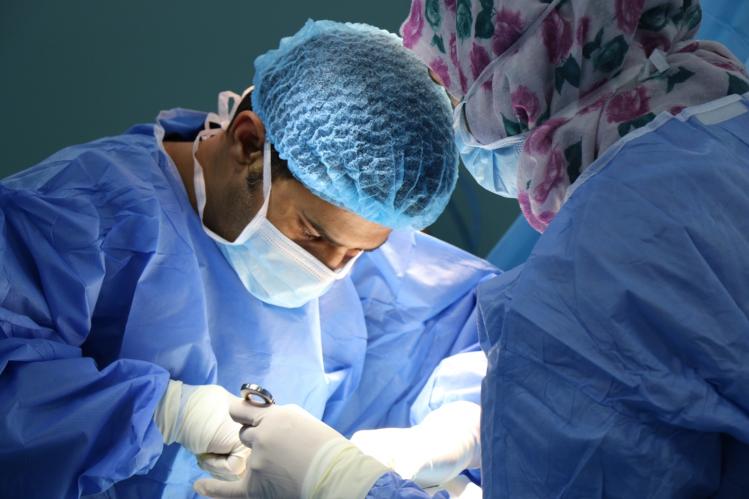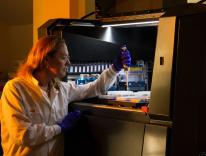
Was Gabriel Brownstein born under an unlucky star, or the opposite? A fifty-four-year-old novelist and teacher, Brownstein suffers from a rare and strangely literary-sounding congenital coronary syndrome known as the tetralogy of Fallot, a perfect storm of coronary defects that includes a hole in the center of his heart, a narrowed pulmonary valve, a displaced aorta, and an enlarged right ventricle. Named for a nineteenth-century French physician, the condition was long considered untreatable and sufferers—called “blue babies” for the bluish cast that poor circulation gives their skin—rarely survived adolescence. In The Open Heart Club, Brownstein relates the biography of his heart problem, and a lot more.
The Open Heart Club charts the history of congenital heart defects and of the medical science that arose to comprehend and ultimately correct them. Brownstein delves into the Europe of four centuries ago to serve up lively accounts of groundbreaking physicians like William Harvey, who studied animal physiology and theorized that blood circulated through the body—an idea his contemporaries considered blasphemous—and Nicolaus Steno, a Danish polymath who first described the tetralogy, and whose research, delivered in lectures to large audiences of medical students across the continent, dramatically advanced the study of coronary anatomy. These Reformation-era anatomists, driven by furious curiosity about the workings of the heart, held that to know nature was to know God—that “one sins against the majesty of God,” as Steno wrote, “by being unwilling to look into nature’s own works.”
Brownstein rounds out the saga with a surprisingly diverse cast of modern characters. We meet such figures as Vivien Thomas, a Black medical technician who achieved prominence at Johns Hopkins in the 1940s—despite being refused use of the main hospital entrance and having to drink from the “Colored” water fountain—and who devised a shunt that enabled “tet” patients to survive. Or Maude Abbott, a McGill University medical museum curator and disciple of famed doctor William Osler, the father of modern medical education. Denied admission to med school, Abbott nonetheless managed through sheer persistence to become the world’s foremost expert on congenital heart deformity, publishing (in 1936, at age seventy) The Atlas of Congenital Cardiac Disease, a pioneering text in pediatric cardiology that Brownstein says “literally saved my life.”
The story of advances in cardiac care moves forward via relentless resourcefulness and DIY improvisation. Vivien Thomas, known for fashioning spatulas for home cookouts out of surgical clamps, invented an array of specialized instruments specifically for pediatric cardiac surgery. The developers of a blood oxygenator to facilitate open-heart surgery jury-rigged the device using a dairy pump and a coil of beer-keg tubing. The Open Heart Club sets out to bolster your faith in medical science and in progress, especially the American, greatest-generation variety—hailing the advent of open-heart surgery in the 1950s, for example, as “a postwar American invention as miraculous as space travel.” Brownstein provides a catalogue of innovations and breakthroughs: cardiac catheterization; heart-bypass surgery; the pacemaker; the implanted defibrillator. They all add up to a lot of lives saved. When the author was born, in the early 1960s, congenital heart disease was one of the top ten causes of death in the United States. Today, 85 percent of children with defects survive.
The costs of medical progress—the collateral damage caused by experimental surgeries—can be horrific, and breakthrough surgeons display an awful determination in pursuit of new techniques, undeterred by the staggering mortality involved. The promise of a greater benefit for future generations always tips the balance sheet. And living with an incurable congenital heart defect poses costs of its own. Brownstein writes insightfully about the long tradition of euphemism, denial, and avoidance on the topic, quoting Susan Sontag on the unmentionable nature of incurable disease and fleshing out the point with his own recollections. “I learned from an early age to disguise and deny my symptoms,” he writes. Unlike many fellow patients, who in adulthood studiously avoid care, Brownstein submits himself, however reluctantly, to a lifetime of follow-up procedures. Yet disguise and denial are profoundly formative. “In refusing to acknowledge my condition, I had constructed a little prison for myself,” he reflects; “I had no capacity for intimacy. I kept my fear secret.... With my family, the subject was taboo. The result was a stunted, shuttered emotional life.”
The memoir part of The Open Heart Club chronicles Brownstein’s effort—ultimately successful—to escape the prison of his anxious aloneness. Belatedly, he marries; becomes a father; lives life fully. But shadows remain. However upbeat its tale of progress, this book reverberates with fear, the daily dread brought by living beneath a cardiac sword of Damocles. Brownstein might feel fine, but he isn’t fine, and deep down he knows it. “My leaking, failing heart was the monster under the bed.” Finally venturing out from behind the wall of denial, he seeks medical counsel for a grossly enlarged right ventricle, one of several problems that typically afflict childhood heart-defect patients later in life. By the latter chapters, which detail the author’s recurring episodes of V-tach, in which his heart uncontrollably races, the dread is contagious—at least to this sixty-one-year-old reader with his own (far less serious) heart issues. Tension continues right up through the final pages, in which the author has a new pulmonary valve, the Edwards Lifesciences Sapien III, installed—not through open-heart surgery, but via catheter, in yet another miraculous innovation.
Brownstein acknowledges his great good fortune in the “happenstance” of having been born at the foundational moment of pediatric cardiology. He was a child tetralogy sufferer at precisely the moment when surgeons figured out how to repair it. And his luck continued. “[E]very time my life has been in danger, doctors have come along and invented something to save me. I have surfed wave after wave of advances in heart surgery and in medical technology.” The Open Heart Club doesn’t address a problem implicit in its celebration of high-tech medicine—namely, that the American avidity for the glamorous cutting edge of medicine, for the sparkling and expensive technologies that enable dramatic interventions, has gone hand in hand with a notably flawed delivery of basic quality community care. But no reader will begrudge Brownstein for rejoicing at what in a very different context has been called “the blessing of the late birth.” His story is one of highly serendipitous timing. Had he been born two decades earlier, he almost certainly would not have been around to write this moving and informative book.
As a writer Brownstein is cheerful, self-deprecating, and instructive. His prose is lucid; he’s an able popular historian, and he weaves his own story in deftly—or should I say, stitches it in? The author himself is by no means above a mordant drollery or two (“My struggle is everyone’s struggle: it’s hard to know your own heart”). He relates how, at a meeting of the Adult Congenital Heart Association, attendees greet each other by listing their malfunctions. Tricuspid atresia, meet hypoplastic right heart syndrome! Brownstein also plays notes in mellower registers, as when he conveys his joy at being able to visit the surgeon who operated on him in childhood—fifty years ago.
A major point of arrival in this book is the recognition of how determinedly humans avoid facing the fact that sooner or later we will all get sick and die. “Well-insured, lucky, and cushioned from sickness, we do our jobs and dance at weddings and make love to our spouses and yell at our children as if the next trip to the hospital isn’t just around the corner,” he observes. “But we’re kidding ourselves.” For Brownstein, this is a constantly astonishing reality. Yet faith, and certainly Christian faith, begins from the assumption of defect, illness, and death. The spiritual dimension to this book is minimal; while Brownstein admires those who are open to religious consolation and trust in a higher power, he confesses that “I don’t have the gift for it”; the metaphysical backdrop to this account of his lifelong struggle is an abiding intuition of personal oblivion. And yet, his own agnosticism notwithstanding, Brownstein’s cycles of travail and recovery ignite, again and again, small detonations of gratitude and wonder. “I felt it all so keenly,” he writes; “the miracle of everything.”
The Open Heart Club
Gabriel Brownstein
PublicAffairs
368 pp. | $28
Please email comments to [email protected] and join the conversation on our Facebook page.
Previous Story
Béisbol, Baseball, and ‘Bad Hombres’
Next Story
The Pascal of the North


